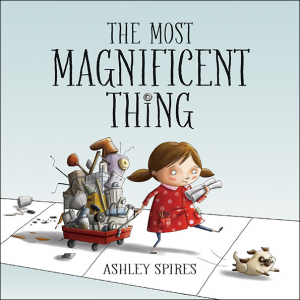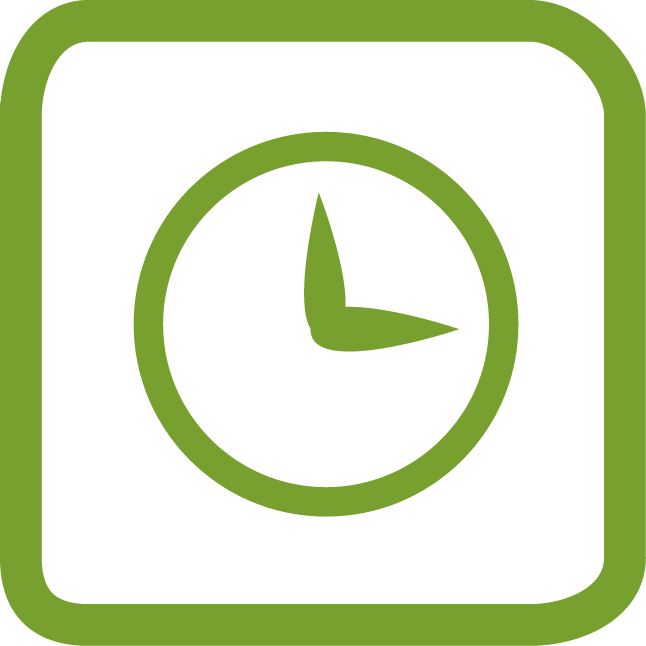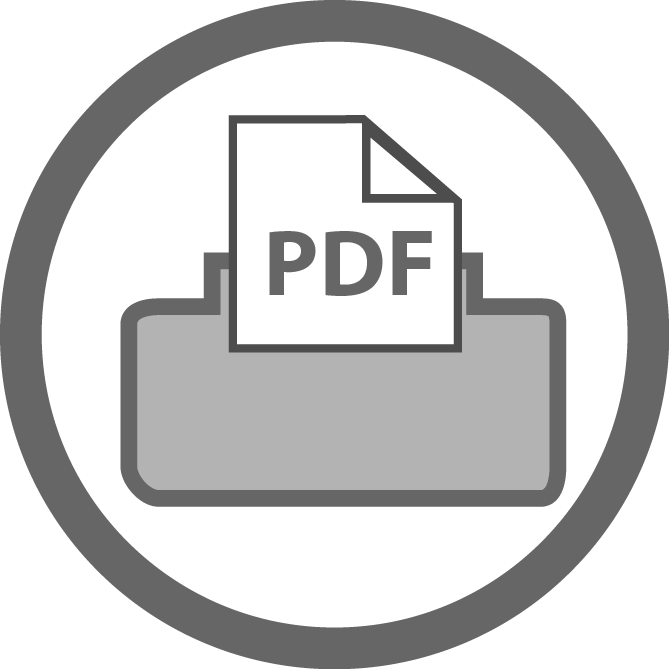 by Ashley Spires
by Ashley Spires
This story is about an unnamed girl and her very best friend, who happens to be a dog. The girl has a wonderful idea. “She is going to make the most MAGNIFICENT thing! She knows just how it will look. She knows just how it will work. All she has to do is make it, and she makes things all the time. Easy-peasy!” But making her magnificent thing is anything but easy, and the girl tries and fails, repeatedly. Eventually, the girl gets really, really mad. She is so mad, in fact, that she quits. But after her dog convinces her to take a walk, she comes back to her project with renewed enthusiasm and manages to get it just right.
Strategies/Skills Used
Reading Strategy 1: Access background information.
Reading Strategy 3: Figure out unknown words.
Reading Strategy 4: Self-monitor and self-correct.
Reading Strategy 7: Determine the most important ideas and events and the relationship between them.
Reading Strategy 9: Identify and interpret literary elements in different genres.
Reading Strategy 10: Summarize what has been read.
Writing Skill 2: I organize my ideas based on my purpose for writing.
Writing Skill 3: I use a variety of sentence lengths and patterns.
 TEACHING THE ACTIVITY: PRE-READING
TEACHING THE ACTIVITY: PRE-READING
(1) Use the Vocabulary Rating activity to introduce students to a list of key words from the story The Most Magnificent Thing with a projector, interactive whiteboard or chart paper. Key words are anger, cause and effect, expectations, frustration, hard work, imagination and play, maker movement, perseverance, and quitting.
 (2) Allow students enough time to indicate their level of knowledge about the given words on the Vocabulary Rating Graphic Organizer.
(2) Allow students enough time to indicate their level of knowledge about the given words on the Vocabulary Rating Graphic Organizer.
(3) Explain to students that they will encounter these words and concepts in the story that you are about to read to them.
(4) Lead a whole-group discussion, highlighting what they already know about the words, to help build further understanding of the vocabulary and topic that they will be exploring.
 TEACHING THE ACTIVITY: DURING READING
TEACHING THE ACTIVITY: DURING READING
(5) Read The Most Amazing Thing to students, highlighting the given words for students as you go. Allow students to attempt to further their understanding of the words using context clues.
(6) Using the Story Grammar instructional strategy, pause at key moments in the story, when the main character’s emotion changes as she struggles to build her “most amazing thing.” Ask students to identify the main idea and event at each point in the story and to share ideas as to why the girl is feeling the way she is.
 (7) List the main events sequentially and complete the Story Grammar Graphic Organizer.
(7) List the main events sequentially and complete the Story Grammar Graphic Organizer.
 TEACHING THE ACTIVITY: POST-READING
TEACHING THE ACTIVITY: POST-READING
 (8) Hand out the Do/Feel/Learn circle readers’ response books to students. (Graphic template from The Big Book of Reading Response Activities, Scholastic, 2007.)
(8) Hand out the Do/Feel/Learn circle readers’ response books to students. (Graphic template from The Big Book of Reading Response Activities, Scholastic, 2007.)
(9) Explain to students that now they will use the circle book to show their understanding of a story:
- What did the character DO over the course of the story (beginning, middle, end)?
- What did the character LEARN over the course of the story? (For example: mistakes are frustrating, but help us get closer to what we want to achieve. This can be done when we feel calm.)
- How did the character FEEL over the course of the story? (Think and list the emotions experienced from the beginning, middle, and end of the story.)
- Draw a picture of the character in an important scene from the story.
(10) Have students complete each circle with as much detail as possible. Encourage students to use the given vocabulary and important events to support their answers.
(11) Have students cut out each circle once they have completed their responses. Fold each circle in half. Glue the back right side of circle 1 to the back left side of circle 2. Then, glue the right side of circle 2 to the back left side of circle 6. Repeat until all the circles are glued to each other.
(12) Provide the opportunity for students to share their circle books. They can be hung from the ceiling in the class, and students can walk around to observe everybody’s books.